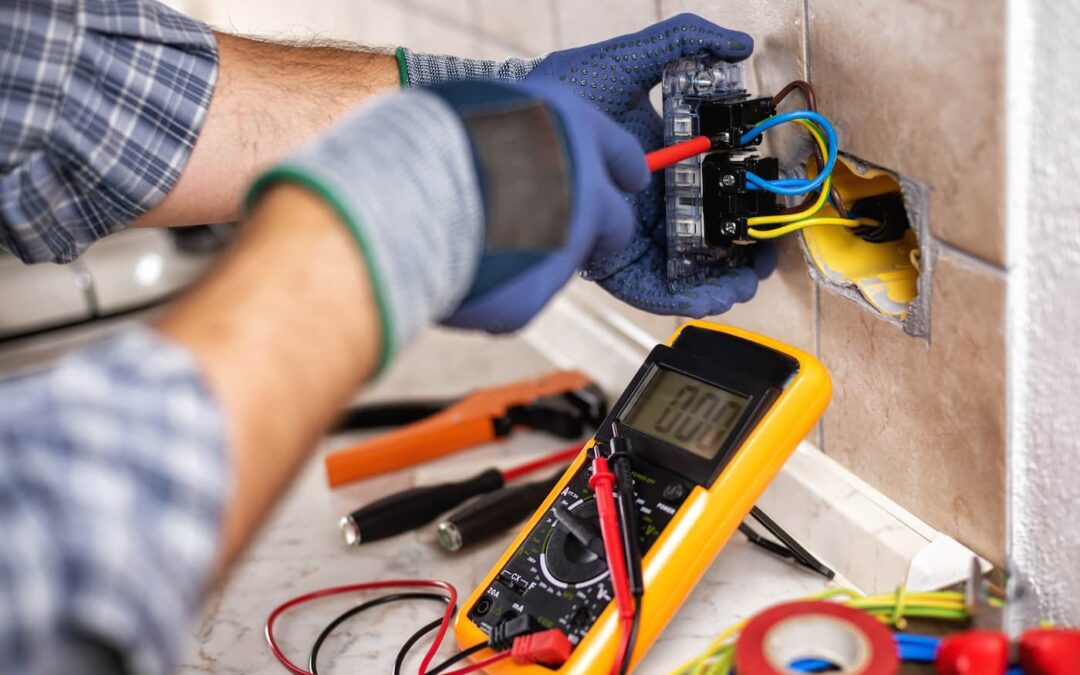From lighting our homes to charging our phones, electricity is a modern miracle that we all rely on. But as magical as it may be to flip a switch to turn on a light, our homes’ electrical systems require regular maintenance, just like the other systems we rely on. As a DIY landlord, handling electrical maintenance can be both rewarding and cost-effective — if you do it correctly. However, electrical work carries inherent risks, and it’s crucial to follow safety guidelines and know when to call a professional.
Let’s take a look at everything DIY landlords can do to maintain their rentals’ electrical systems while staying safe.
The Importance of Regular Electrical Maintenance
Staying on top of your property’s maintenance is always important, but electrical systems come with their own special concerns. Keeping them in top condition ensures the safety of your tenants by preventing electrical fires, shocks, and other dangers caused by faulty wiring or malfunctioning components. Regular maintenance also helps avoid costly emergency repairs and reduces the likelihood of major system failures, saving you money in the long run. Adhering to electrical codes and regulations protects you from legal liabilities and potential fines. And of course, a well-maintained electrical system keeps your tenants happy, which improves retention rates and creates fewer vacancies.
While it’s clear that regular electrical maintenance is an essential part of maintaining your rental, many landlords may find the idea of DIY electrical work intimidating. But even though any electrical work carries some potential risk, you can easily tackle many simple but meaningful electrical projects.
Understanding the Basics
Before diving into maintenance tasks, it’s essential to have a basic understanding of your property’s electrical system. The main components include the service panel, also known as the breaker panel, which distributes power to various circuits throughout the property. Circuits carry electricity to different parts of the house, and breakers protect these circuits by shutting off the flow of electricity in case of an overload or short circuit. Wires transmit electricity from the service panel to outlets, switches, and appliances, while outlets and switches provide access to electricity for everyday use.
Safety should be your top priority when working with electrical systems. Always shut off power to the area you’re working on, and use a voltage tester to confirm that the power is off. Ensure you have insulated tools and wear rubber-soled shoes to help prevent an electric shock. You should also familiarize yourself with local electrical codes and regulations to ensure compliance, as improper electrical work can lead to serious hazards and legal issues. Know your limits: if a task feels beyond your skill level or involves major electrical work, don’t hesitate to call a licensed electrician.
Regular Inspection and Maintenance
Routine inspections and maintenance can prevent many electrical issues and are often simpler and easier than you might think.
Electrical Panel
Regularly inspect the service panel for signs of rust or corrosion, which can indicate moisture problems. Address any water leaks immediately. Flip breakers on and off to ensure they’re working correctly. If a breaker feels loose or trips frequently, it may need replacing. Ensure all circuits are clearly labeled, as this will save time and reduce confusion during repairs.
Wiring
Inspect visible wiring for signs of fraying or damage, which should be replaced immediately. Rodents can chew through wiring, creating fire hazards, so look for droppings or gnawed areas and take steps to control pests.
Outlets and Switches
Outlets and switches should be tested with a plug-in tester to check that they are wired correctly and provide power. Replace any that are not functioning. Ground Fault Circuit Interrupter (GFCI) outlets are critical in kitchens, bathrooms, and other areas where water could encounter an electrical outlet. You may want to encourage your tenants to test GFCI outlets once a month by pressing the test and reset buttons. Check switches for proper operation and replace any that are warm to the touch, which can indicate a wiring issue.
Light Fixtures
Light fixtures should be inspected for loose connections, and any that are wobbly should be secured. Replace any burnt-out bulbs promptly and consider using energy-efficient LED or CFL bulbs to reduce energy consumption and maintenance costs.
Common Repairs and Upgrades: Our Tips
Some electrical tasks are straightforward and can be handled by most DIY landlords. These are a few common upgrades or repairs that you might consider tackling yourself:
Replacing Outlets and Switches
- Turn Off Power: Always cut power at the breaker panel before starting.
- Remove and Inspect: Unscrew the outlet or switch cover and remove the device. Inspect wiring connections and replace any damaged components.
- Install a New Device: Connect wires to the new outlet or switch, ensuring a secure and correct connection. Screw the device back into the box and replace the cover.
Upgrading to GFCI Outlets
- Identify Line and Load Wires: GFCI outlets have line and load terminals. Ensure you connect the incoming power to the line terminals.
- Test the GFCI: After installation, test the GFCI outlet using its test and reset buttons to ensure proper operation.
Installing New Light Fixtures
- Choose Compatible Fixtures: Be sure the new light fixture is compatible with your existing wiring before you start the installation.
- Secure Connections: Connect the fixture’s wires to the house wiring using wire nuts. Secure the fixture to the electrical box and install the bulbs and cover.
Adding Dimmer Switches
- Check Compatibility: Ensure the dimmer switch is compatible with the type of bulbs you’re using (LED, incandescent, etc.).
- Install and Test: Replace the existing switch with the dimmer, following the manufacturer’s instructions. Test the dimmer to ensure it operates smoothly without flickering.
Stop Electrical Issues Before They Happen
Preventive measures can help avoid electrical problems and make your rental more safe. Installing whole-house surge protectors at the service panel can protect appliances and electronics from power surges. Arc-Fault Circuit Interrupters (AFCIs) can be installed in areas prone to electrical fires, such as bedrooms and living rooms, as they detect and shut down dangerous arc faults.
Regular tenant communication is also essential; educate your tenants on electrical safety and encourage them to report any issues promptly. Be sure to provide clear instructions on what to do in case of an electrical emergency.
Know When to Call the Pros
While DIY maintenance can save money, some tasks should always be handled by professionals. Rewiring an entire home or significant parts of it is complex and should be left to licensed electricians. Upgrading or replacing a service panel involves high voltage and complicated regulations. If you encounter recurring problems, such as frequently tripping breakers or persistent flickering lights, find a professional to address the underlying issue.
Don’t Be Frazzled By Electrical Maintenance
Ensuring your rental property’s electrical system is safe and efficient can be daunting and stressful. Let Rent Portland Homes Darla Andrew’s Office take the burden off your shoulders. Our experienced team offers comprehensive property management services, including expert electrical maintenance, inspections, and repairs. We have strong connections with trusted electricians in Portland, ensuring your property is always in top condition.
Don’t let electrical issues keep you up at night: Trust Rent Portland Homes Darla Andrew’s Office to handle all your property’s electrical needs with professionalism and care. For more information, give us a call at (503) 515-3170 or reach out any time on our website.


Recent Comments